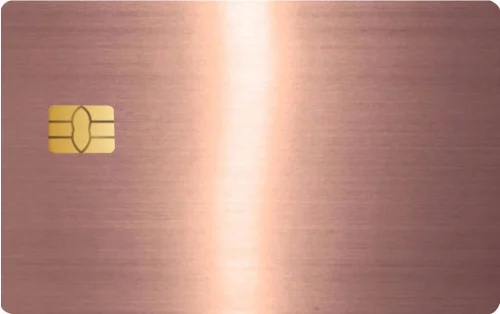Thinking about getting metal cards for your brand or business? Let’s talk about one key detail that makes all the difference: thickness. Not all metal cards are created equal, and the thickness you choose can change everything—from how your card feels in hand to how long it lasts and even what kind of designs you can pull off. Let’s break it down together.
What Do We Mean by “Thickness”?
When people talk about metal card thickness, they usually use “mils” (thousandths of an inch) or millimeters. For context, standard metal card thickness:
– 20 mil = 0.02 inches (about 0.5 mm)
– 40 mil = 0.04 inches (about 1 mm)
Pro tip: If you want to be super precise, grab a micrometer or caliper to check thickness.
Why does this matter?
Because a card that’s too thin can feel flimsy, while one that’s too thick might be awkward to carry or use.
The Most Common Thicknesses (And Why They Exist)
Most metal cards fall into a few standard thicknesses. Here’s a quick cheat sheet:
– 0.30 mm (12 mil): Lightweight, minimalist, easy to handle.
– 0.40 mm (16 mil): A bit sturdier but still sleek.
– 0.50 mm (20 mil): Heavier, with that “premium” feel.
Manufacturers stick to these standards so the cards work smoothly with machines that emboss, print, or slot them. If you’re not sure where to start, these sizes are a safe bet!

How Thickness Changes the Game
- Durability
– Thicker cards: Less likely to bend, snap, or get damaged.
– Thinner cards: Lighter and easier to carry, but might not last as long.
- Feel
– Thick = Premium: Heavier cards feel more luxurious and “serious.”
– Thin = Sleek: Lighter cards feel modern and uncluttered.
- Perceived Quality
– People often associate weight and thickness with value. If you’re aiming for a high-end impression, go a little thicker!
How to Pick the Right Thickness for Your Business Cards
Ask yourself:
– Who’s going to get these cards?
VIP clients? Industry contacts? Go thicker for a wow factor.
– What’s your brand vibe?
Minimalist and modern? Thinner might work. Bold and exclusive? Thicker is better.
– How important is durability?
Will these cards be handled a lot? Thicker = longer lasting.
And remember: Thicker cards can cost more and sometimes require special printing techniques.
Customization: What’s Possible at Different Thicknesses?
– 18–20 mil (Thin):
– Great for detailed engraving
– Ideal for minimalist designs
– Some limitations on color printing and embossing
– 30–40 mil (Thick):
– Supports deeper engraving
– Handles layered colors, anodized finishes, and raised text
– More robust for intricate embellishments
So, if you have a wild design in mind, you’ll want to lean toward the thicker side.
Thin vs. Heavyweight Metal Cards: Quick Comparison
Thin Cards (18–20 mil):
– Pros: Lightweight, flexible, easy to carry, perfect for detailed designs.
– Cons: Less durable, might feel less “premium.”
Heavyweight Cards (30–40 mil):
– Pros: Super durable, impressive feel, stands out in a stack.
– Cons: Heavier, can be tricky to fit in some wallets or card holders, more expensive.
Design Tip:
If you want lots of texture or deep embossing, thicker is better. But for fine lines and tiny details, thinner cards shine.
Tips for Choosing the Perfect Thickness
– Test It Out: Order a sample kit with different thicknesses and feel them yourself.
– Think About Your Audience: Will they appreciate a heavier, premium card, or do they just need your info?
– Match Your Brand: Sleek and simple? Go thin. Luxe and bold? Go thick.
– Don’t Forget Practicality: If your card needs to slide into a wallet slot, don’t go too thick!
Popular Thicknesses (With Real-World Examples)
Here’s what you’ll see most often:
– 20 mil (Aluminum or Stainless Steel): Lightweight, modern look
– 30 mil (Brass or Carbon Steel): Heavier, durable, high-end feel
– 40 mil (Titanium or Heavy Steel): Super substantial, luxury branding or access cards
Bottom line:
The right thickness balances durability, feel, and design. It’s all about what fits your brand and makes the right impression.
